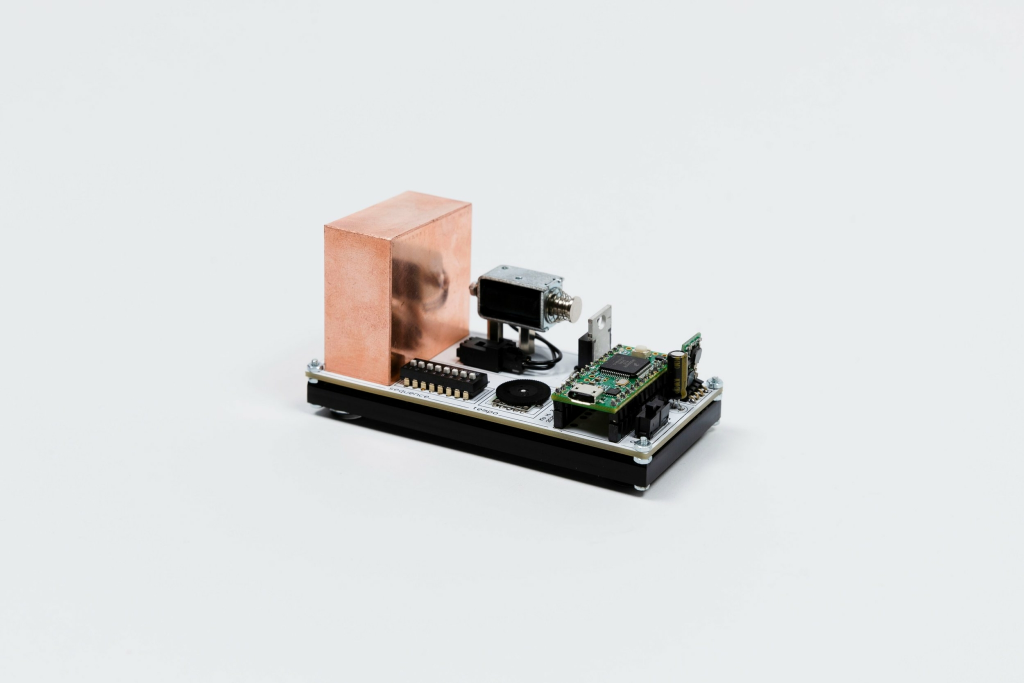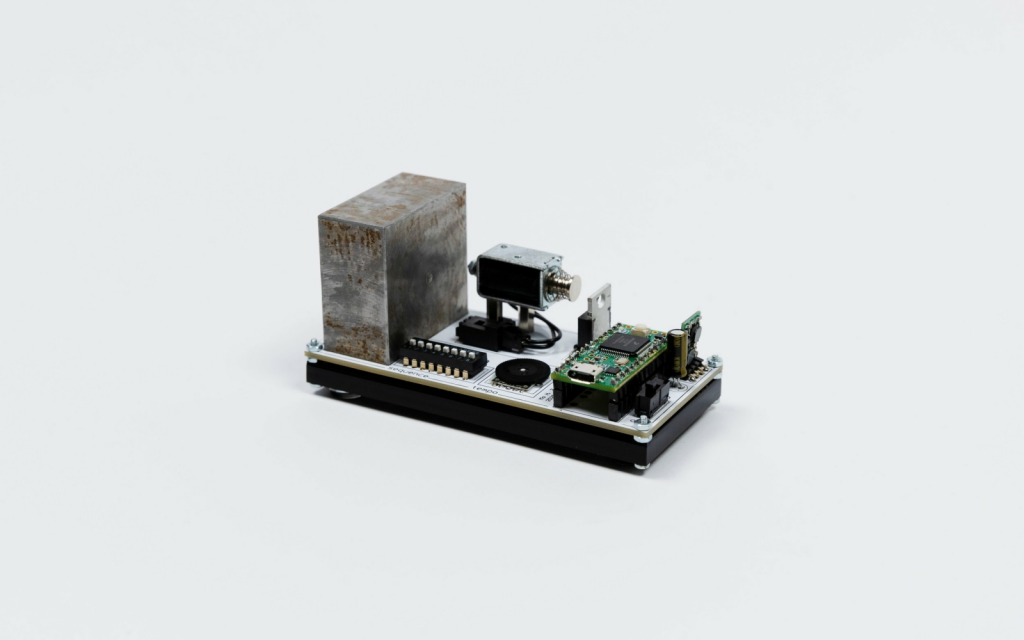All Seeing Eye.
sketch
function setup() {
createCanvas(400, 300);
background(73, 80, 87);
}
function draw() {
stringLeftLower(204, 255, 255, 55);
stringLeftUpper(204, 255, 255, 55);
stringRightUpper(204, 255, 255, 55);
stringRightLower(204, 255, 255, 55);
translate(width/2, height/2);
stringCircle(204, 255, 255);
noLoop();
}
function stringLeftLower(r, g, b, t) {
var numLines = 40;
var x1 = 0; var y1 = 0; var y2 = height;
var x2 = xInc = (width/numLines);
var yInc = (height/numLines);
stroke(r, g, b, t);
for (index = 0; index < numLines; index ++) {
line(x1, y1, x2, y2);
y1 += yInc;
x2 += xInc;
}
}
function stringLeftUpper(r, g, b, t) {
var numLines = 40;
var x1 = 0;
var y1 = height; var y2 = 0;
var x2 = xInc = width/numLines;
var yInc = height/ numLines;
stroke(r, g, b, t);
for (index = 0; index < numLines; index ++) {
line(x1, y1, x2, y2);
y1 -= yInc; x2 += xInc; }
}
function stringRightUpper(r, g, b, t) {
var numLines = 40;
var x1 = xInc = width/numLines;
var x2 = width;
var y1 = 0;
var y2 = 0;
var yInc = height/ numLines;
stroke(r, g, b, t);
for (index = 0; index < numLines; index ++) {
line(x1, y1, x2, y2);
y2 += yInc; x1 += xInc; }
}
function stringRightLower(r, g, b, t) {
var numLines = 40;
var x1 = width; var x2 = 0;
var xInc = width/numLines;;
var yInc = height/numLines;
var y1 = height - yInc; var y2 = height;
stroke(r, g, b, t); for (index = 0; index < numLines; index ++) {
line(x1, y1, x2, y2);
y1 -= yInc; x2 += xInc; }
}
function stringCircle(r, g, b) {
var circlePoints = 36;
var angle = 0;
var rotDeg = 0;
for (index = 0; index < circlePoints; index++) {
push();
angle = map(index, 0, circlePoints, 0, TWO_PI);
var radius = 90;
var circleX = radius * cos(angle);
var circleY = radius * sin(angle);
translate(circleX, circleY);
rotate(radians(rotDeg));
var circleX2 = -radius * 2;
var circleY2 = 0;
var smallCircleDiam = 10;
var offset = 15;
stroke(r, g, b, 255);
circle(0, 0, smallCircleDiam * .2);
noFill();
circle(0, 0, smallCircleDiam);
stroke(r, g, b, 125);
line(0, 0, circleX2, circleY2);
line(0, 0, circleX2, circleY2 + offset);
line(0, 0, circleX2, circleY2 -offset);
stroke(r, g, b, 50);
line(0, 0, offset * 8, circleY2);
line(0, 0, offset * 8, circleY2 + offset);
line(0, 0, offset * 8, circleY2 -offset);
backgroundCircles(index, offset, r, g, b, 80);
pop(); rotDeg += 10; }
}
function backgroundCircles(index, offset, r, g, b, t) {
push();
stroke(r, g, b, t); translate(25, 0);
if (index % 2 == 0) {
circle(0, 0, 20);
circle(110, 0, 70);
} else {
var diam = offset * 4; circle(offset * 3, 0, diam);
var shiftValue = 10;
circle(offset * 3, -shiftValue, diam/2);
circle(offset * 3, shiftValue, diam/2);
circle(offset * 3 + shiftValue, 0, diam/2);
circle(offset * 3 - shiftValue, 0, diam/2);
}
pop()}
![[OLD SEMESTER] 15-104 • Introduction to Computing for Creative Practice](../../../../wp-content/uploads/2023/09/stop-banner.png)








